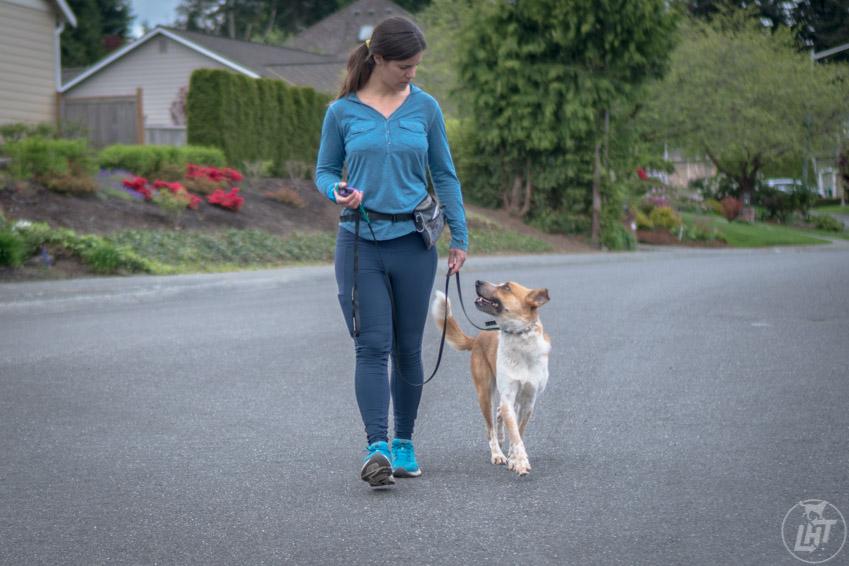In the delightful dance of daily walks, the bond between a dog and its owner often finds its rhythm—or, at times, its discord. Picture this: a sunlit path beckoning with promises of adventure, yet your furry companion, eager to chase the scents of the world, tugs insistently at the leash, turning what should be a serene stroll into a tug-of-war. Loose leash training emerges as a beacon in this scenario, a technique designed to foster a harmonious relationship between human and canine. With a blend of patience, understanding, and a few strategic methods, this approach not only encourages your dog to walk beside you but enhances communication and trust. Join us as we explore the principles and practices of loose leash training, empowering you and your four-legged friend to stride confidently together through life’s meandering trails.
Table of Contents
- Understanding the Principles of Loose Leash Training
- Building a Strong Foundation with Positive Reinforcement
- Common Challenges and Effective Solutions for Walking Success
- Enhancing Your Skills: Tips for Consistent Practice and Progress
- Q&A
- Key Takeaways
Understanding the Principles of Loose Leash Training
Loose leash training is based on the concept of consistency and communication between the dog and the owner. By establishing clear expectations, dogs learn to walk calmly beside their owner instead of pulling ahead. The process helps to create a rewarding walking experience for both parties, leading to stronger bonding. To effectively implement this method, consider the following key principles:
- Reward-based Approach: Use treats or praise when the dog is walking beside you.
- Frequent Practice: Regular, short training sessions lead to better results.
- Stop and Go: Teach your dog that pulling results in stopping. Movement will only resume when they are beside you.
Understanding your dog’s motivation and adjusting training methods accordingly can significantly enhance the effectiveness of loose leash training. Analyzing their behavior will allow you to customize the experience to their needs. Moreover, maintaining a calm demeanor during training sessions is essential, as dogs often mirror their owner’s emotional state. Here’s a simple table illustrating some dos and don’ts of loose leash training:
| Dos | Don’ts |
|---|---|
| Maintain a steady pace. | Yank the leash harshly. |
| Use a comfortable collar or harness. | Allow excessive pulling. |
| Reward good behavior promptly. | Ignore your dog’s cues. |
Building a Strong Foundation with Positive Reinforcement
Implementing positive reinforcement in your loose leash training approach can significantly enhance your dog’s learning experience and strengthen your bond. This method encourages desired behaviors by rewarding your dog, making training sessions enjoyable and effective. Start by establishing clear expectations during walks. Use treats, praise, or playtime to reward your dog when they walk beside you with a relaxed leash. Consistency is key, so be sure to:
- Identify triggers: Recognize situations where your dog is likely to pull and address them accordingly.
- Use high-value rewards: Offer treats that your dog loves to keep them motivated.
- Keep training sessions short: Limit training to brief periods to maintain your dog’s focus and enthusiasm.
As you progress, gradually increase the distractions during walks to help your dog learn to maintain their loose leash behavior in various environments. Celebrate small victories to build your dog’s confidence and reinforce positive habits. A well-structured reinforcement strategy could include a simple table outlining the steps to success:
| Step | Action | Reward |
|---|---|---|
| 1 | Begin walking with a relaxed leash | Treat & praise |
| 2 | Maintain focus despite distractions | Praise & bonus treat |
| 3 | Walk beside owner without pulling | Playtime or favorite toy |
By systematically reinforcing positive behaviors, you can foster a learning environment where your dog feels confident and valued, paving the way for a successful loose leash training journey.
Common Challenges and Effective Solutions for Walking Success
Walking with your dog should be a joyful experience, but many pet owners encounter common challenges that can turn an outing into a struggle. One prevalent issue is the tendency of dogs to pull on the leash, which can be both frustrating and potentially dangerous. Frequent distractions from other dogs, people, or interesting smells can set the stage for pulling behavior. Additionally, changes in pace, such as speeding up or slowing down suddenly, can confuse your dog, leading to tugging. To counteract these behaviors, consistent and structured training is essential. Implementing techniques like the “stop and go” method, where you pause and allow your dog to settle anytime they pull, reinforces the idea that walking calmly leads to a more rewarding experience.
Another challenge is inconsistency in training methods, which can stem from differences in the approaches taken by various family members or caregivers. Ensuring that everyone involved is on the same page is crucial for effective loose leash training. Here are some effective strategies to promote a steady approach:
- Use the Same Command Words: Ensure everyone uses the same language when communicating with the dog.
- Implement Regular Practice Sessions: Dedicate time each week for structured practice walks.
- Reward Good Behavior: Consistently offer praise or treats when your dog walks beside you on a loose leash.
When the family is aligned in their methods, progress can be accelerated, and those enjoyable walks will become easier and more frequent.
Enhancing Your Skills: Tips for Consistent Practice and Progress
To achieve success with loose leash training, consistency in your practice sessions is key. Begin by setting aside dedicated time each day to work with your dog in various environments. This not only helps reinforce the skills but also allows your pup to adapt to different distractions. Consider these tips for your practice routine:
- Short Sessions: Keep training sessions brief (5-10 minutes) to maintain focus and interest.
- Positive Reinforcement: Use treats and praise to reward your dog for walking beside you without pulling.
- Vary Locations: Practice in different settings – quiet parks, busy streets – to simulate real-life scenarios.
Tracking your progress can significantly enhance your training effectiveness. Keeping a record allows you to visibly see improvements and areas needing more work. Consider using a simple table to monitor your dog’s performance during each session:
| Date | Session Length | Behaviors Noted | Reinforcement Used |
|---|---|---|---|
| Oct 1 | 10 mins | Good focus, minimal pulling | High-value treats |
| Oct 2 | 5 mins | Distracted by other dogs | Praise and toys |
| Oct 3 | 15 mins | Improved response to cues | Clicker and treats |
Q&A
Q&A: Everything You Need to Know About Loose Leash Training
Q1: What is loose leash training?
A1: Loose leash training is a method of walking your dog where the leash remains slack, allowing for a more pleasant and relaxed experience for both the dog and the handler. The goal is to teach your dog to walk beside you without pulling ahead, creating a harmonious stroll rather than a tug-of-war.
Q2: Why is loose leash training important?
A2: Loose leash training fosters better communication between you and your dog. It promotes good manners, enhances their focus, and reduces the likelihood of accidents in crowded areas. Not only does it make walks more enjoyable, but it also helps to prevent physical strain on both you and your dog.
Q3: At what age should I start loose leash training with my dog?
A3: You can start loose leash training as soon as you bring your puppy home, usually around 8 weeks old. However, it’s never too late to train, and older dogs can also learn this skill with patience and consistency. Tailor your approach based on your dog’s age, size, and prior experiences with leash walking.
Q4: What equipment do I need for loose leash training?
A4: While a well-fitted collar or harness is essential, many trainers recommend using a standard, non-retractable leash for loose leash training. This provides better control and reduces distractions. Consider treats or a favorite toy as positive reinforcement to reward your dog for walking calmly beside you.
Q5: How do I start the training process?
A5: Start in a low-distraction environment, like your backyard or a quiet street. Begin walking with your dog, and the moment they pull ahead, stop walking. Wait for them to return to your side. When they do, reward them with treats or praise. It’s crucial to be consistent and patient, repeating this process until they understand the desired behavior.
Q6: How long should training sessions be?
A6: Keep training sessions short and sweet—around 5 to 10 minutes for puppies and up to 15 minutes for older dogs. Quality matters more than quantity. Regular, brief sessions are often more effective than long, drawn-out practices.
Q7: My dog keeps getting distracted while walking. What can I do?
A7: Distractions are part of everyday life! Start by practicing in quieter areas and gradually expose your dog to more stimulating environments. Use high-value treats to redirect their focus back to you when they become distracted. You can also teach the “look” command, encouraging your dog to make eye contact when distractions arise.
Q8: How do I maintain loose leash walking skills after training?
A8: Consistency is key! Incorporate loose leash walking into your regular outings, and mix in some fun activities, like hikes or visits to the dog park, to reinforce the skill in different environments. Regularly practice and reward good behavior; it turns training into a lifelong habit.
Q9: What if my dog continues to pull despite my best efforts?
A9: If your dog persists in pulling, consider re-evaluating your training technique and approach. You may need to explore professional training classes for additional guidance. A trainer can offer tailored strategies and insight into your dog’s behavior to help you overcome this hurdle.
Q10: Can loose leash training improve my relationship with my dog?
A10: Absolutely! Loose leash training fosters understanding and enhances the bond between you and your dog. As you work together, you’ll build trust and communication, ultimately leading to a more rewarding partnership. A well-trained dog is a happy dog!
By answering these questions, we hope this Q&A Serves as a helpful guide to understanding and implementing loose leash training techniques. Happy walking!
Key Takeaways
As we conclude our exploration of loose leash training, it becomes clear that this practice is more than just a technique; it’s a pathway to building a deeper bond with your dog. Implementing these strategies takes time, patience, and consistency, but the rewards—a more relaxed walk, a more engaged pet, and a more fulfilling shared experience—are well worth the effort. Remember, every dog is unique, and what works for one may need adjustments for another. Embrace the journey, celebrating every small victory along the way. With a little persistence and a lot of love, you’ll turn each outing into an enjoyable adventure, fostering a harmonious partnership that extends beyond the leash. Here’s to many happy walks ahead!


